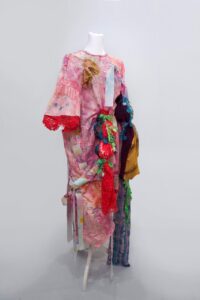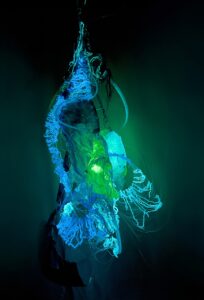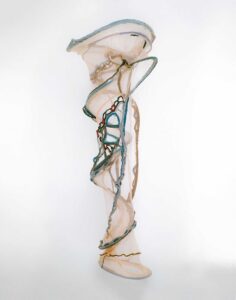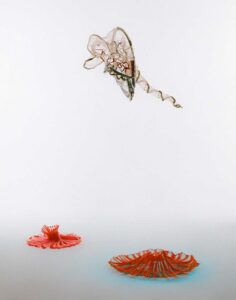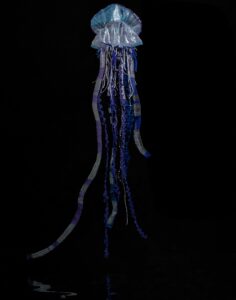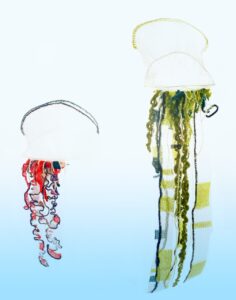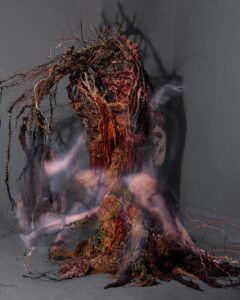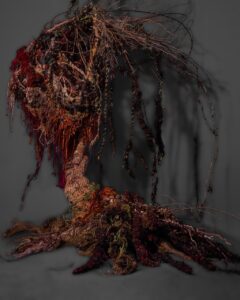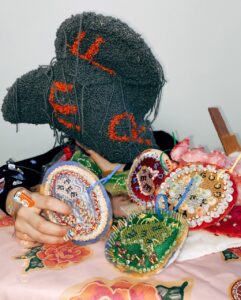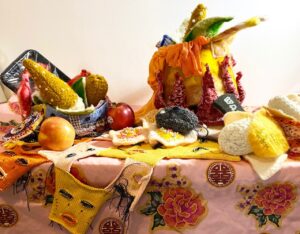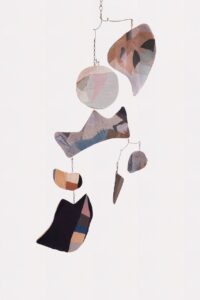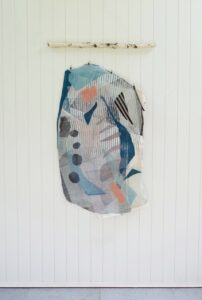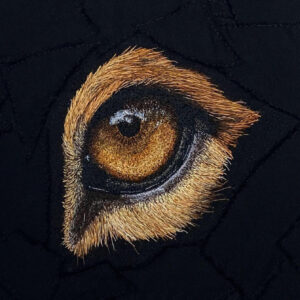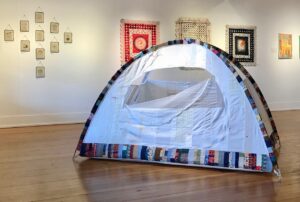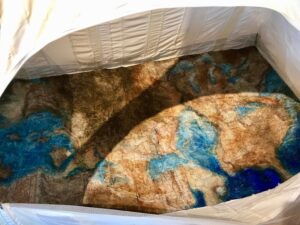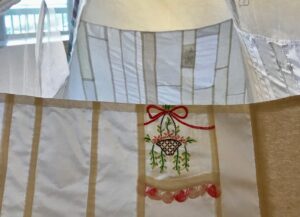Ailish Henderson
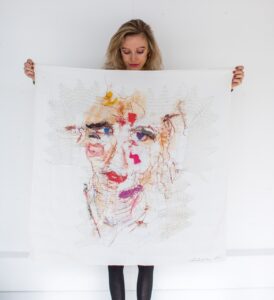
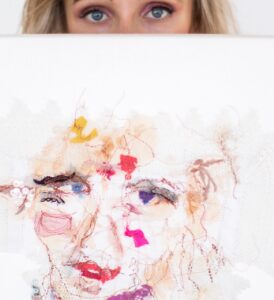
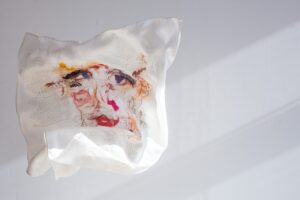
British Textile Artist Ailish Henderson had her hand stitched collage ‘Pistachio Smiles’ translated into a silk scarf. Here is her interesting story behind her work.
“This piece of the artist’s work, quietly questions the impact events experienced have on our ongoing narrative line. Strong memories built in childhood may only come to light decades later, where they can take on new meaning and finally be understood. Due to the artists localised interest in the portrayal of mending, in this portrait there is an underlying vie for, specifically repair within the humanistic emotional context. When married together, this is transposed via the techniques and materials employed. Irish linen as a ‘canvas’ and foundation to work upon, has been sourced and used to give a nod to her heritage, whilst etching techniques and watercolours mixed with the tactile are reminiscent of her lost grandmothers links with the Fine Arts. Using familial ideography juxtaposed with these and other treasured materials; a cross-discipline approach is employed. The artist here vocalises her most personal question to date, how to ‘mend the maker’. It is her belief that across creative disciplines, there can be a form of restoration for the author of works, brought about via the act of making, not the outcome itself.”
Photography by Sean Elliot http://seanelliottphotography.co.uk
See more of Ailish’s work at http://www.ailishhenderson.com




